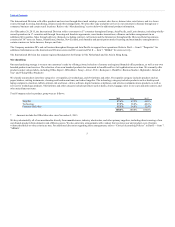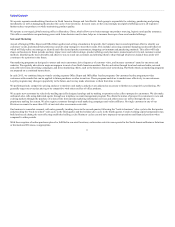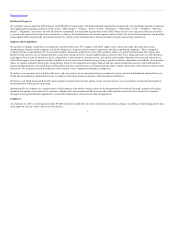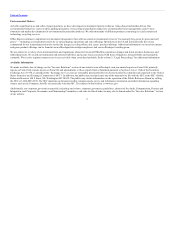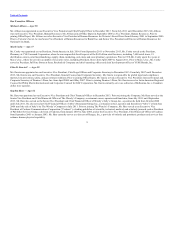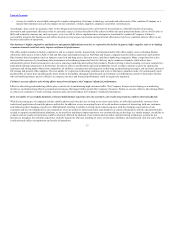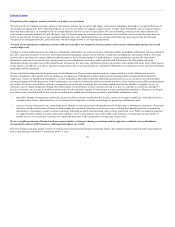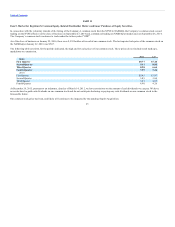OfficeMax 2015 Annual Report Download - page 17
Download and view the complete annual report
Please find page 17 of the 2015 OfficeMax annual report below. You can navigate through the pages in the report by either clicking on the pages listed below, or by using the keyword search tool below to find specific information within the annual report.
Table of Contents
and local governments is highly competitive, subject to federal and state procurement laws, requires more restrictive contract terms and can be expensive and
time-consuming. Bidding such contracts often requires that we incur significant upfront time and expense without any assurance that we will win a contract.
Our ability to compete successfully for and retain business with the federal and various state and local governments is highly dependent on cost-effective
performance. Our business with governmental entities and agencies is also sensitive to changes in national and international priorities and their respective
budgets, which in the current economy continue to decrease. We also service a substantial amount of business through agreements with purchasing
consortiums and other sole- or limited-source distribution arrangements. If we are unsuccessful in retaining these customers, or if there is a significant
reduction in sales under any of these arrangements, it could adversely impact our business and results of operations.
Our operating results and performance depend significantly on worldwide economic conditions and their impact on business and consumer spending. In the
past, the decline in business and consumer spending resulting from the global recession has caused our comparable store sales to continue to decline from
prior periods and we have experienced similar declines in most of our other domestic and international businesses. Our business and financial performance
may continue to be adversely affected by current and future economic conditions in the U.S. and internationally, including, without limitation, the level of
consumer debt, high levels of unemployment, higher interest rates and the ability of our customers to obtain credit, which may cause a continued or further
decline in business and consumer spending.
We operate a large network of stores, delivery centers, and delivery vehicles around the globe. As such, we purchase significant amounts of fuel needed to
transport products to our stores and customers as well as shipping costs to import products from overseas. While we may hedge our anticipated fuel purchases,
the underlying commodity costs associated with this transport activity have been volatile in recent years and disruptions in availability of fuel could cause
our operating costs to rise significantly to the extent not covered by our hedges. Additionally, other commodity prices, such as paper, may increase and we
may not be able to pass along such costs to our customers. Fluctuations in the availability or cost of our energy and other commodity prices could have a
material adverse effect on our profitability.
We purchase products for resale under credit arrangements with our vendors and have been able to negotiate payment terms that are approximately equal in
length to the time it takes to sell the vendor’s products. When the global economy is experiencing weakness as it has over the last several years, vendors may
seek credit insurance to protect against non-payment of amounts due to them. If we continue to experience declining operating performance, and if we
experience severe liquidity challenges, vendors may demand that we accelerate our payment for their products or require cash on delivery, which could have
an adverse impact on our operating cash flow and result in severe stress on our liquidity. Borrowings under our existing credit facility could reach maximum
levels under such circumstances, causing us to seek alternative liquidity measures, but we may not be able to meet our obligations as they become due until
we secure such alternative measures.
We use and resell many manufacturers’ branded items and services. As a result, we are dependent on the availability and pricing of key products and services,
including ink, toner, paper and technology products. As a reseller, we cannot control the supply, design, function, cost or vendor-required conditions of sale
of many of the products we offer for sale. Disruptions in the availability of these products or the products and services we provide to our customers may
adversely affect our sales and result in customer dissatisfaction. Further, we cannot
15


